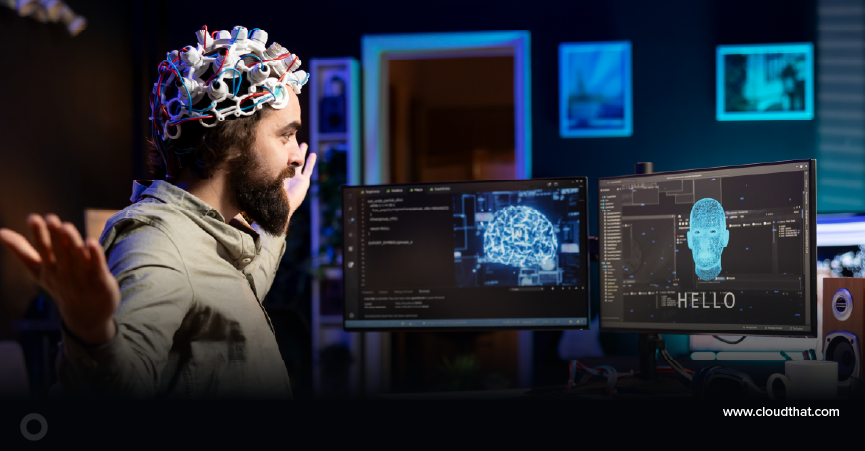|
Voiced by Amazon Polly |
Introduction
Deepfake technology primarily relies on deep learning algorithms, a subset of artificial intelligence (AI), to create convincing manipulated videos. Specifically, Deepfake algorithms utilize deep neural networks, which are complex mathematical models inspired by the structure and function of the human brain.
Generative adversarial networks (GANs) are another key AI technique in Deepfake technology. GANs consist of two neural networks—the generator and the discriminator—that work in tandem to produce highly realistic synthetic images or videos. The generator generates fake images or videos while the discriminator evaluates their authenticity. Both networks continually improve through adversarial training, resulting in increasingly convincing Deepfake content.
Furthermore, recurrent neural networks (RNNs) and their variants, such as long short-term memory (LSTM) networks, may also be employed in Deepfake applications for handling sequential data, such as audio for voice manipulation or video frames for facial expression synthesis.
The genesis of Deepfake technology lies in its ability to seamlessly graft and manipulate facial expressions, gestures, and voices onto existing videos, creating seemingly authentic yet entirely synthetic content. Combining these advanced AI techniques enables Deepfake technology to produce remarkably realistic and deceptively manipulated videos.
Pioneers in Cloud Consulting & Migration Services
- Reduced infrastructural costs
- Accelerated application deployment
Applications and Use Cases
- Entertainment Industry:
One of the positive applications of Deepfake technology lies in the entertainment industry. Filmmakers can resurrect deceased actors or recreate historical figures with stunning accuracy, offering new creative possibilities. This can lead to immersive storytelling experiences and bring characters to life in previously impossible ways.
- Face Swapping and Dubbing:
Deepfake videos are often utilized for harmless face-swapping and dubbing in meme culture and social media. Users can insert their faces into famous movie scenes or lip-sync to iconic dialogues, creating humorous content that entertains and engages audiences.
- Training and Simulation:
Deepfake technology finds practical use in training scenarios for various professions, such as medical professionals, law enforcement, and military personnel. Simulations involving realistic scenarios enhance training effectiveness, allowing individuals to practice their skills in a controlled environment.
- Accessibility in the Film Industry:
Low-budget filmmakers can benefit from Deepfake technology by reducing production costs. Instead of hiring expensive actors or engaging in elaborate set designs, filmmakers can use Deepfake tools to create realistic characters and scenes, democratizing the filmmaking process.
Cons of Deepfake Technology
The proliferation of Deepfake technology has ushered in a new era of digital manipulation, bringing a suite of ethical concerns and potential societal pitfalls. One prominent drawback lies in the amplification of misinformation and the erosion of trust in visual content. Deepfakes, with their ability to convincingly replicate real individuals in fabricated scenarios, can be weaponized to disseminate false narratives, jeopardizing the integrity of news, political discourse, and online information sharing. This has profound implications for the democratic process, as the authenticity of visual evidence becomes increasingly difficult to discern, raising questions about the reliability of what we see and hear in the digital age.
Furthermore, Deepfakes pose a serious threat to personal privacy. The technology’s capacity to seamlessly superimpose faces onto different bodies or manipulate voices can be exploited for malicious purposes, such as creating explicit or compromising content without the consent of the individuals involved. This not only violates privacy rights but also has the potential to ruin reputations and inflict emotional distress on unsuspecting victims. As society grapples with the evolution of Deepfake capabilities, it becomes imperative to address these ethical concerns and implement robust measures to mitigate the potential harms associated with the dark side of this innovative technology.
Conclusion
The advent of Deepfake videos marks a significant milestone in the fusion of artificial intelligence and media production. While technology brings forth exciting possibilities in entertainment and training, it is essential to address ethical concerns and potential misuse. Striking a balance between innovation and responsible use will shape the future trajectory of Deepfake technology, ensuring that it enriches rather than undermines our societal fabric. As we navigate this uncharted territory, staying informed and fostering a responsible approach will be key to harnessing the true potential of Deepfake technology.
Drop a query if you have any questions regarding Deepfake and we will get back to you quickly.
Making IT Networks Enterprise-ready – Cloud Management Services
- Accelerated cloud migration
- End-to-end view of the cloud environment
About CloudThat
CloudThat is an award-winning company and the first in India to offer cloud training and consulting services worldwide. As a Microsoft Solutions Partner, AWS Advanced Tier Training Partner, and Google Cloud Platform Partner, CloudThat has empowered over 850,000 professionals through 600+ cloud certifications winning global recognition for its training excellence including 20 MCT Trainers in Microsoft’s Global Top 100 and an impressive 12 awards in the last 8 years. CloudThat specializes in Cloud Migration, Data Platforms, DevOps, IoT, and cutting-edge technologies like Gen AI & AI/ML. It has delivered over 500 consulting projects for 250+ organizations in 30+ countries as it continues to empower professionals and enterprises to thrive in the digital-first world.
FAQs
1. How can we distinguish between authentic videos and Deepfakes?
ANS: – Distinguishing between authentic videos and Deepfakes can be challenging. However, subtle anomalies such as unnatural eye movements, inconsistent lighting, or artifacts around the edges of the face may indicate a Deepfake.
2. Are there ethical concerns associated with the use of Deepfake technology?
ANS: – Yes, ethical concerns abound. Deepfake videos can be used for malicious purposes, including spreading misinformation, creating fake news, or defaming individuals. Striking a balance between creative expression and ethical considerations is crucial.
3. Is it possible to leverage Deepfake technology for beneficial applications?
ANS: – Absolutely. Deepfake technology has the potential to bring characters to life in the entertainment industry, aid in realistic training simulations, and democratize filmmaking. Like any tool, its impact depends on how it is wielded.

WRITTEN BY Anirudha Gudi
Anirudha Gudi works as Research Associate at CloudThat. He is an aspiring Python developer and Microsoft Technology Associate in Python. His work revolves around data engineering, analytics, and machine learning projects. He is passionate about providing analytical solutions for business problems and deriving insights to enhance productivity.


 Login
Login


 March 14, 2024
March 14, 2024 PREV
PREV










Comments